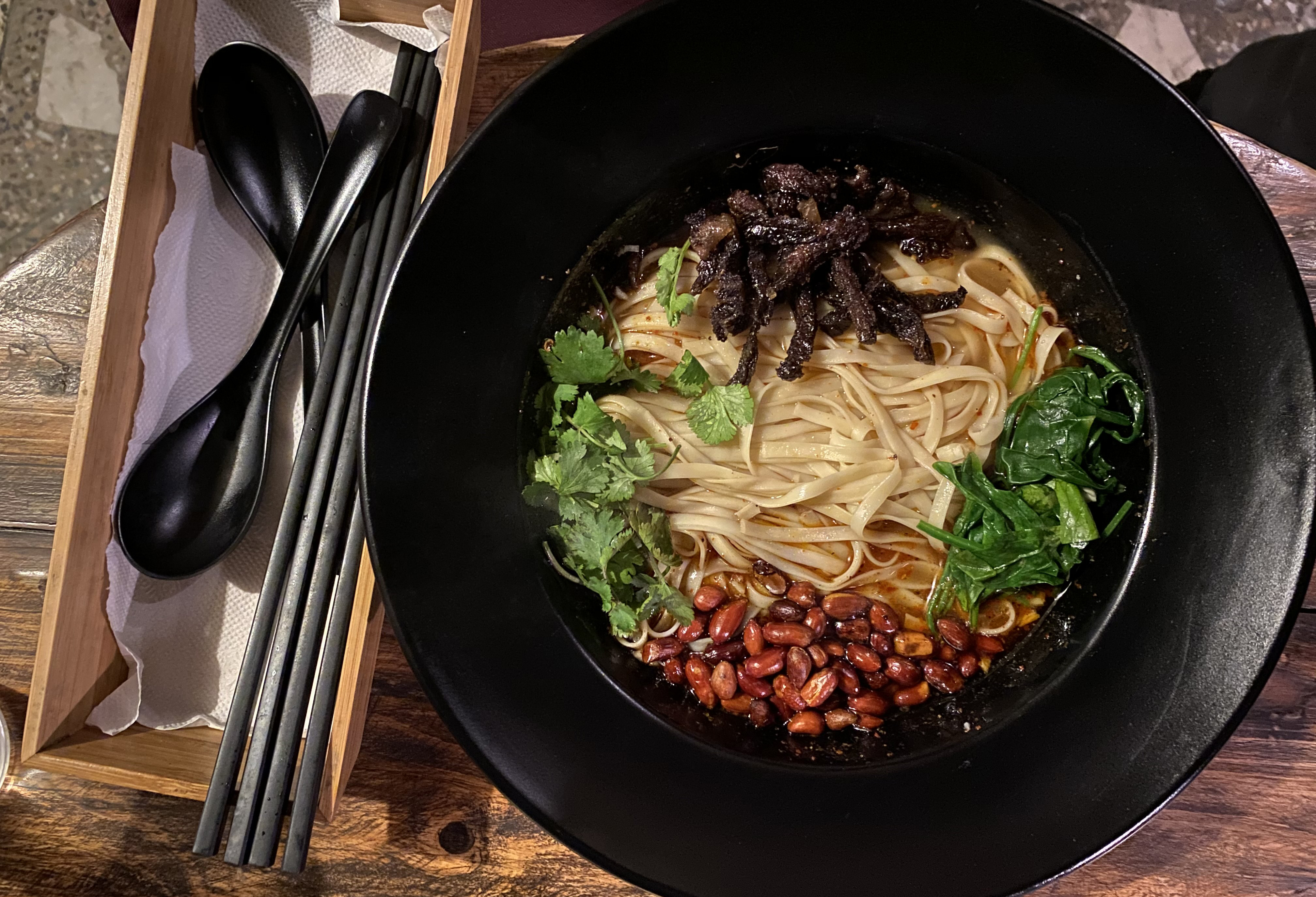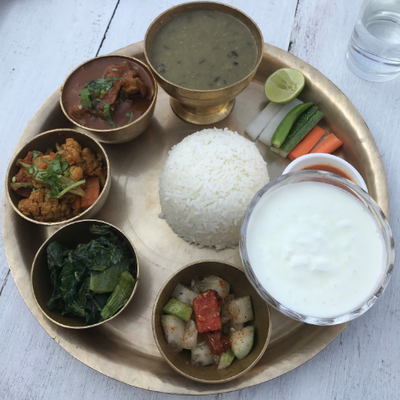Food
Come for the view, stay for the gua bao
Luma offers a decent view of Boudha stupa but it is the restaurant’s pork buns that will keep you coming back.
Hantakali
For any restauranteur, setting up an establishment in one of the buildings overlooking the Boudhanath Stupa can be akin to striking gold. The circle draws huge crowds, that are easier to pull into any restaurant, and most of these buildings offer great views of the stupa and its environs, providing patrons with an opportunity to dine with a view. But with only a limited number of buildings facing the stupa, and many of them already occupied, finding a space can be nigh impossible. Even if a space does open up, the sky-high rent is certain to eat into any profits.
This is perhaps why the street right opposite the gate to Boudhanath Stupa has seen a steady increase in the number of restaurants. Many of them also offer rooftop dining with views of the stupa, but at much more affordable rents.
One of the more recent restaurants on that stretch is Luma. Located on the top floor of a commercial complex, the restaurant opened in mid-2019 with just nine tables—seven in a semi-outdoor section offering a beautiful view of the stupa.
On chilly evenings, the atmosphere at the restaurant is lively; the crowd is mostly young, and the restaurant’s stereo belts out the latest hit R&B tracks. The food menu is limited but includes some interesting Asian choices—Indonesia, China, Taiwan, and Japan. The prices too are very moderate, given that this is a Boudha restaurant. But what matters is how good the food actually is.
As soon as I sit down, a staff member promptly arrives with a menu. I ask him what our table should order, and his answer is perhaps what diners usually hear—‘hamro sabai ramro cha’, i.e., everything of ours is good. After some prodding, the staff member reluctantly provides his suggestion—nasi goreng, Indonesian fried rice, which is what we start with.

The rice comes topped with a failed attempt at an egg sunny-side-up. The egg appears to have spent a tad too long in the pan, causing the yolk to solidify and lose every bit of its agility to run. What separates nasi goreng from any run-of-the-mill fried rice is the generous amount of chilli and the use of fish sauce. Accordingly, the rice is strewn with chilli flakes and tiny pieces of chopped chicken and onion. The chilli flakes lend the dish firm heat, which is enough to tease the palate but not set it on fire. The tiny chunks of chicken are well cooked.
Once the plate of nasi goreng is wiped clean, we wait an eternity for the next dish—gua bao, flour buns with pork belly filling, also known as a Taiwanese burger. The gua bao, a classic Chinese and Taiwanese snack, has a steamed bun, which is delightfully soft and airy. The bun is stuffed with two slabs of slow-braised fatty pork that are dripping juices. The pork is tender, and the edges have a nice crisp texture. Sitting inside the bun with the pork is chopped crunchy, briny seaweed. The pork is slathered with lumps of coarse peanut paste, which in turn appears to be coated with sugar syrup. The mixture is a delightful marinade of thick fatty, juicy pork and salty seaweed. Adding earthiness to the dish is the sizeable leaf of spinach that sits at the bottom of the bun. What is missing though is something sour, perhaps pickled jalapeno, to tease the palate. But it is still a great snack, and at Rs290 for two gua baos, it is a delicious bargain.

Perfect for these rainy, overclouded winter days is noodle soup. We opt for hot and sour noodle, and when it arrives, the gigantic portion takes us all by surprise. Floating in a thin broth with puddles of oil on top are slippery white noodles flecked with minuscule chilli flakes. Bobbing in the bowl is a generous amount of peanuts, alongside spinach, fresh coriander, and deep-fried strips of buff. The broth doesn’t seem to be made from bones. It seems to be made from vegetable or chicken stock cubes. But where it excels is in delivering the promised hot and sour flavours. The vinegar in the broth adds a mild tanginess and the chilli flakes lend the dish heat, without becoming too overpowering. The broth also carries with it the familiar taste of chilli oil that many Chinese restaurants in the city tend to use.
Of all the three dishes we tried, the gua boa shines brightest, through and through. I’d come back to Luma just for these delicious morsels. The other two dishes offer a slightly different version from their counterparts in Nepal—nasi goreng for fried rice, and hot and sour noodle for beloved thukpa. The two aren’t remarkable, but they aren’t bad either, especially given their price and portion.

The combination of the view of the stupa, the palatable food and the moderate pricing is Luma’s unique selling point. The view and the food might be passable but the pricing would have been nigh impossible had it chosen a location inside the stupa premises.
Restaurant Luma Rs 160 to 550 per person
Food: ★★
Ambience: ★★★
Value: ★★★




 16.12°C Kathmandu
16.12°C Kathmandu










